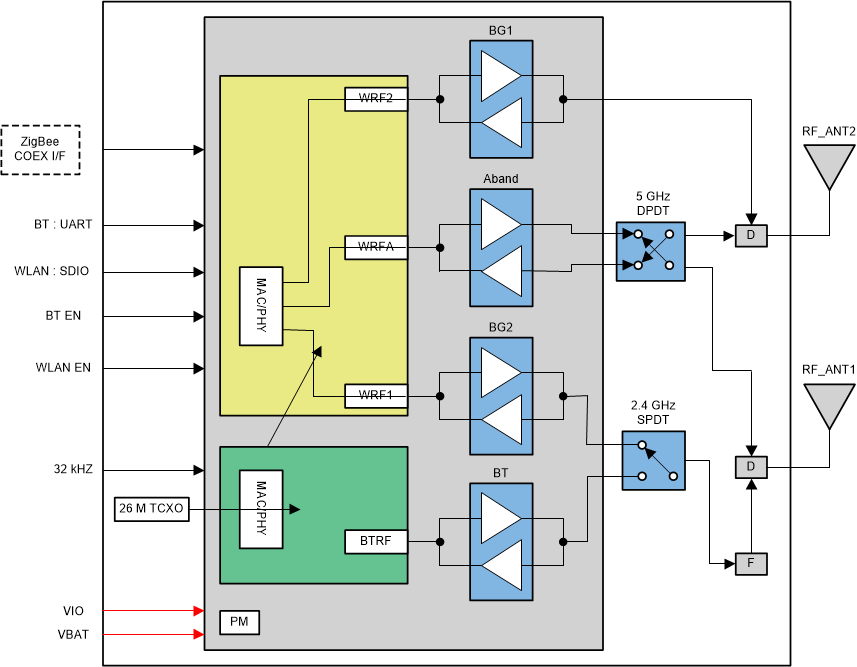TIDUDT4A May 2018 – November 2021 AM3351 , AM3352 , AM3354 , AM3356 , AM3357 , AM3358 , AM3358-EP , AM3359
- Description
- Resources
- Features
- Applications
- 5
- 1System Description
- 2System Overview
- 3Hardware, Software, Testing Requirements, and Test Results
- 4Design Files
- 5Software Files
- 6Related Documentation
- 7About the Author
- 8Revision History
2.3.5 WL1837MOD
The certified WiLink 8 module from TI offers high throughput and extended range, along with Wi-Fi and Bluetooth coexistence (WL1837MOD only) in a power-optimized design. The WL18x7MOD is a Wi-Fi, dual-band, 2.4- and 5-GHz module solution with two antennas supporting Industrial temperature grade. The device is FCC, IC, ETSI/CE, and TELEC certified for AP (with DFS support) and client. TI offers drivers for high-level operating systems, such as Linux and Android. Additional drivers, such as WinCE and RTOS, which includes QNX, Nucleus, ThreadX, and FreeRTOS, are supported through third parties.
Figure 2-8 shows the functional block diagram of the WL1837MOD.
 Figure 2-8 WL1837MOD Functional Block Diagram
Figure 2-8 WL1837MOD Functional Block Diagram